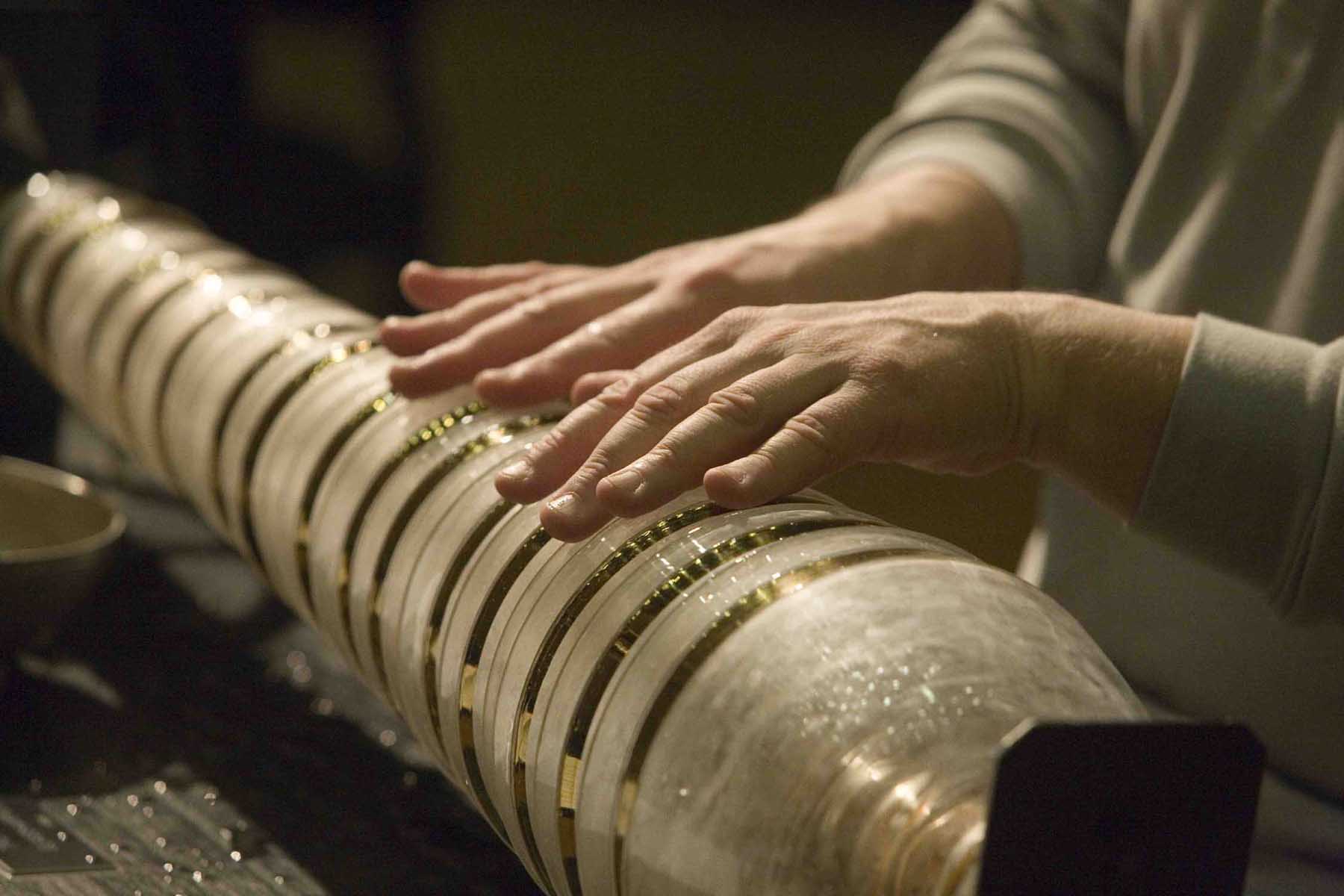 |
| Benjamin Franklin playing the armonica |
In the decades that followed, the big concert halls that were built and the increasing capability of acoustic instruments to produce stronger sounds pushed the soft-sounding armonica to the dark corners of history, where it mostly remained quiet, collecting dust. Two centuries passed, and then German composer Jörg Widmann was asked to write an homage piece to Mozart to be performed on January 27th 2007—Mozart’s 251st Birthday. Widmann chose an original way of doing so. He used his own musical language to commemorate the instrument for which Mozart wrote his last chamber music piece.
An armonica in an orchestra is like someone who goes to a party alone without knowing anyone there. In order to help the armonica feel more comfortable in its new surrounding, Widmann adds a couple more friends: the accordion and the water gong. Although these don’t often get invited to most orchestra parties either, they are more common instruments than the armonica, and are both connected to the armonica. This enables them to serve as a bridge between the armonica and the rest of the orchestra.
The upper register of the accordion sounds very similar to the armonica. But whereas the armonica’s sound is glassy and somewhat cold, the accordion is softer and warm. The water gong is a bronze drum hung over a small tub filled with water. After hitting it, the player lowers the drum into the tub. As the drum takes a dip, its pitch changes. The use of the water gong is a clear reference to the armonica and the musical wine glasses, which are both played with moistened fingers.
 |
| Armonica |
But the real climax, the emotional one, comes toward the end of the piece, when the armonica becomes soft singing. Literally. The human voice was always the object of envy for instruments. When we learn to play an instrument, our teacher regularly implores us: “sing!” In the score of their instrumental pieces, composers often write cantabile, songful. In a hair-raising moment, as a final effort of stretching the boundaries, Wildmann asks the armonica player to sing while still playing, making it sound as if the singing is coming out of the instrument. Like spinning straw into gold, the sound of the armonica turns into a human voice.
Wildmann’s Armonica has a ghostly feel to it in part because of the nature of the instruments, but also because of the extensive use of the octanonic scale—alternating intervals of a whole step and a half step. Composers used the octatonic scale often in order to create a supernatural atmosphere. Listening to the piece, you might very well feel as if you are conjuring ghosts, perhaps those of Benjamin Franklin and Wolfgang Amadeus Mozart, trying out the armonica for the first time.
To listen to Widmann's Armonica click here

Wow mind blowing post, thanks for sharing. Piano playing is excellent therapy for the stress of life. Many professional people come home from a hard days work and relax by expressing their emotions on the keyboard.resurrecting chords
ReplyDelete